The legendary JRR Tolkien
27th July 2023
“Do you wish me a good morning, or mean that it is a good morning whether I want it or not; or that you feel good this morning; or that it is a morning to be good on?” (The Hobbit)
It is time to celebrate the anniversary of one of my favourite series of books by the great John Ronald Reuel Tolkien, it is of course The Lord of the Rings. First published on 29th July 1954 it turns sixty-nine this year, it has kept its popularity throughout all those years and has also inspired best-selling films and series to complement and expand the fictional fantasy world we have grown up with.
If you have read some of my previous blogs here at Browns, (Star Wars (brownsbfs.co.uk), Super 6 Eclectic Rabbits (brownsbfs.co.uk), Obsessed with Dragons (brownsbfs.co.uk) ) then you will know that I am a fan of fantasy fiction and the obscure characters that you find inside their pages. I am always awestruck when reading Tolkien’s books and since I first discovered the wonders of Middle-earth, his books are the most used and worn in my collection at home. He has been rightly identified as the ‘father’ of modern fantasy literature.
I have been reading up on Tolkien’s life and discovering how all his fantastic, and still best-selling, books came to be. I won’t bore you with all the details, but I will summarise as best I can without being a total fangirl!
“Where there’s life there’s hope.” (The Hobbit)
Tolkien was born January 3rd, 1892, in South Africa where his family lived until the death of his father in February 1896, then he, his mother and younger brother all moved to Birmingham, England. Whilst in South Africa he had a nasty experience with a large hairy spider which makes sense for fans who have read or even seen The Hobbit. Sadly, his mother soon passed away in 1904 leaving the two boys orphaned and in the care of their Catholic Priest, Father Francis Morgan.
From the age of 12 Tolkien was already showing remarkable linguistic gifts having mastered the Latin and Greek language which at that time was a staple to an arts education, he even mastered a range of both modern and ancient languages, notably Gothic and Finnish, all whilst making his own languages purely for his own entertainment. Most of the places and names brought to life in his works could have been inspired by the names he had seen on the coal trucks bound for Wales, with destinations like Nantyglo, Penrhiwceiber, and Senghenydd. Little did he know how useful these languages would be later in life. After a swift walking holiday in Switzerland in 1911 (possibly the inspiration for the Misty Mountains) he went to Exeter College, Oxford where he stayed to immerse himself in the Classics, Old English, the Germanic Languages, Welsh, and Finnish, until 1913 where he pursued his first love, Edith. Fun fact that Edith was a local girl and was born and raised in Birmingham, who had an aptitude for music and the theatre!
When Tolkien was 16, Father Francis forbade him to pursue any relations with Edith until he was of legal age, so he waited patiently and sent a letter (written on the night of his 21st birthday) to try re-kindle where they had left off. Edith moved over to Warwick and converted to Catholicism and the pair grew ever closer in the run up to the war, in 1915 he was called up for active duty on the Western Front, so they decided to wed in the March of 1916.
“It’s a dangerous business, Frodo, going out your door. You step onto the road, and if you don’t keep your feet, there’s no knowing where you might be swept off to.” (The Lord of the Rings)
During his service in World War I he saw action in the Somme as a second lieutenant where he fought until ‘trench fever’ overcame him in November 1916 and he was sent back to England to recuperate in a hospital bed for a month. During the last few months all but one of his close friends had been killed in action, and partly as an act of piety to their memory, but also stirred by reaction against his own war experiences, he had already begun to put his stories into shape which later (but not in his lifetime) were published in The Book of Lost Tales, the first mentions of Elves and Gnomes can be read and the first recorded versions of the wars against Morgoth, which are explored more in The Silmarillion. (Featured further down!)
Tolkien spent the rest of the war on light duties in our very own East Yorkshire and Edith took the opportunity to live near where he was posted, in my hometown of Hornsea! There is a house near our Mere with a blue plaque to commemorate the great Tolkien’s being right on our doorstep drinking in the rural landscapes and taking inspiration from some town names such as Frodingham, which is suspiciously a lot like our young hobbit hero, Frodo. Edith then followed her husband as he ventured south down the coast to Withernsea, again there is a blue plaque celebrating the fact that the literary legend used to live in what is now the lifeboat fish and chip shop.
“I seem to see ahead, in a kind of way. I know we are going to take a very long road, into darkness; but I know I can’t turn back.” (The Lord of the Rings)
After the Armistice was signed in 1918, Tolkien was already underway obtaining a career in the academic field, he was accepted for the quite senior post of Reader (Associate Professor) in English Language at the University of Leeds in 1920. Here is where he could work on some of his rare but influential academic writings including the collaboration with E.V. Gordon, Sir Gawain and the Green Knight, and the most notable lecture findings on Beowulf, which are still in print in various editions to this date!
Tolkien’s academic writing and research explains so much about where he got the concept for The Hobbit and The Lord of the Rings. One of the poems he discovered in the course of his Old English studies at Exeter College, was the Crist of Cynewulf – and he was amazed especially by the cryptic couplet:
Eálá Earendel engla beorhtast
Ofer middangeard monnum sended
Which translates as:
Hail Earendel brightest of angels,
over Middle Earth sent to men.
You can see the origin for the name of the great half-elven elder Earendil here, and of course how fitting as the great Earendil did indeed look over the Middle-earth in Tolkien’s world. His story is found in The Silmarillion, but Earendil is referred to by many characters throughout The Lord of the Rings, mainly around the star that he created as he sailed his light-bearing ship up into the night sky and was talked about in later years as the evening star, guiding all through the darkness.
“There are no safe paths in this part of the world. Remember you are over the Edge of the wild now, and in for all sorts of fun wherever you go.” (The Hobbit)
Tolkien’s family life was fairly straight forward after he married his childhood sweetheart, Edith, in 1916 and they had 4 children in the next 13 years, John Francis Reuel Tolkien in 1917, Michael Hilary Reuel Tolkien in 1920, Christopher Reuel Tolkien in 1924, and Priscilla Reuel Tolkien in 1929. You will note that his first born was named John, you may think this was to honour his own name but no, in his family traditions it was the custom for the eldest son of the eldest son to be called John! Also, the Reuel has been given to all the children's names as another tradition coming from a religious point as an unexplained other name for Jethro, Moses’ father-in-law. All his children and the children's children shall have the name. Only a few of his children have carried on this tradition that we know of.
With so many young ones around him to entertain, he got into the habit of writing the children annual illustrated letters as if from Santa Claus, and a selection of these were published first in 1976 as The Father Christmas Letters (a more recent adaptation below).
“In a hole in the ground there lived a hobbit. Not a nasty, dirty, wet hole, filled with the ends of worms and an oozy smell, nor yet a dry, bare, sandy hole with nothing in it to sit down on or to eat: it was a hobbit hole, and that means comfort.” (The Hobbit)
As the children grew out of the letters from Santa Claus, Tolkien had to up his game and age rating, so he started to write more elaborate fantasy tales starting in 1930, set in a world of his own creation, which thankfully grew into the popular title The Hobbit. Later it was finally a published piece of work in 1937, with illustrations by the author himself (who knew Tolkien was an accomplished amateur artist!), and this proved to be so popular that the publisher asked for a sequel.
The sequel took 17 years to perfect and became the masterpiece The Lord of The Rings where a few aspects from The Hobbit were carried over, for example the infamous One Ring, and it was also an extension built upon Tolkien’s Silmarillion tales which was later published by his son telling the earlier history of Middle-earth and introducing some of the key characters such as Galadriel, Elrond and the dark lord, Sauron.
The Lord of the Rings was originally published in three volumes, receiving constant support from one of his closest friends C.S.Lewis, author of The Chronicles of Narnia. It took 17 years for him to perfect the Lord of the Rings novels due to numerous obstacles in his way, firstly he was only managing to write in his spare time around teaching and family time, and secondly, the country was still coping with the rationings of the War which included paper shortages, it was a long drawn out process even before he could get the words out onto the page!
“Don’t adventures ever have an end? I suppose not. Someone else always has to carry on the story.” (The Fellowship of the Ring)
Tolkien retired from teaching in 1959 but still received steadily increasing public attention and fame for his successful adventure novels, he regretted choosing an early retirement as the profits were so large. He had to remove himself from the telephone directory as the attention did not die down, and he and Edith moved away to Bournemouth, with his status growing rapidly he was accepted into polite society with ease much to Edith’s delight and she was then a major society hostess showing off her pride for her husband becoming such a famous author.
Edith had ten good years being in the spotlight with their high social status until she sadly died in 1971, Tolkien returned to Oxford where he resided at Merton College and received a few more titles and embellishments for his literary success. 21 months later he sadly passed away and was then buried in the same grave as his beloved Edith, but that was not the end for his son Christopher gifted us with some of his father’s incomplete writings from his later years such as Unfinished Tales: Of Naumenor and Middle-earth.
“End? No, the journey doesn’t end here. Death is just another path, one that we all must take. The grey rain-curtain of this world rolls back, and all turns to silver glass, and then you see it. White shores, and beyond, a far green country under a swift sunrise.” (The Lord of the Rings)
Phew! I hope that you are still with me, and I haven’t bored you too much with Tolkien’s life story, below I have found the main event titles from all of the published books that I have mentioned above throughout the great writer’s life, and also some of his lesser known works if you wish to venture further into the magical writings that Tolkien had created. If you are an enthusiastic fan like me, you will know all about the film franchise that was directed by Peter Jackson that barely scratched the surface of the rich world in the novels around Middle-earth. The newest series on Amazon Prime called The Rings of Power does show us the events that took place thousands of years before The Hobbit which dives deeper into parts of The Silmarillion and introduces the main characters and how they came to be in Middle-earth.
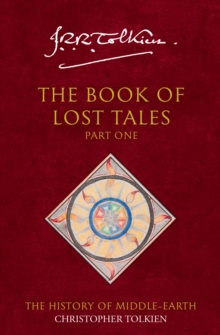
The Book of Lost Tales 1
Tolkien, Christopher
Paperback / softback
The first of a two-book set that contains the early myths and legends which led to the writing of Tolkien's epic tale of war, The Silmarillion. The Book of Lost Tales stands at the beginning of the entire conception of Middle-earth and Valinor for the Tales were the first form of the myths and legends that came to be called The Silmarillion. Embedded in English legend and English association, they are set in the narrative frame of a great westward voyage over the Ocean by a mariner named Eriol to the lonely Isle where the Elves dwelt; from them he learned their true history, the Lost Tales of Elfinesse. In the Tales are found the earliest accounts of Gods and Elves, Dwarves, Balrogs and Orcs; of the Silmarils and the Two Trees of Valinor; of the geography and cosmology of Tolkien's invented world. This series of fascinating books has now been repackaged to complement the distinctive and classic style of the 'black cover' A-format paperbacks of The Hobbit, The Lord of the Rings, The Silmarillion and Unfinished Tales.
More Details
The Book of Lost Tales 2
Tolkien, Christopher
Paperback / softback
The second of a two-book set that contains the early myths and legends which led to the writing of Tolkien's epic tale of war, The Silmarillion. This second part of The Book of Lost Tales includes the tale of Beren and Luthien, Turin and the Dragon, and the only full narratives of the Necklace of the Dwarves and the Fall of Gondolin, itself the finest and most exciting depiction of a battle that Tolkien ever wrote. Each tale is followed by a commentary in the form of a short essay, together with texts of associated poems, and contains extensive information on names and vocabulary in the earliest Elvish languages. This series of fascinating books has now been repackaged to complement the distinctive and classic style of the 'black cover' A-format paperbacks of The Hobbit, The Lord of the Rings, The Silmarillion and Unfinished Tales.
More Details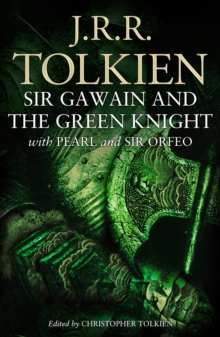
Sir Gawain and the Green Knight
Tolkien, J. R. R.
Paperback / softback
This smart new paperback edition contains the fully-reset text of three medieval English poems, translated by Tolkien for the modern-day reader and containing romance, tragedy, love, sex and honour. It features a beautifully decorated text and includes as a bonus the complete version of Tolkien’s acclaimed lecture on Sir Gawain. Sir Gawain and the Green Knight and Pearl are two poems by an unknown author written in about 1400. Sir Gawain is a romance, a fairy-tale for adults, full of life and colour; but it is also much more than this, being at the same time a powerful moral tale which examines religious and social values. Pearl is apparently an elegy on the death of a child, a poem pervaded with a sense of great personal loss: but, like Gawain it is also a sophisticated and moving debate on much less tangible matters. Sir Orfeo is a slighter romance, belonging to an earlier and different tradition. It was a special favourite of Tolkien’s. The three translations represent the complete rhyme and alliterative schemes of the originals, and are uniquely accompanied with the complete text of Tolkien’s acclaimed 1953 W.P. Ker Memorial Lecture that he delivered on Sir Gawain.
More Details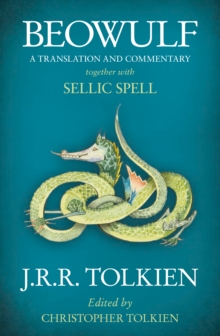
Beowulf
Tolkien, J. R. R.
Paperback / softback
The translation of Beowulf by J.R.R. Tolkien was an early work, very distinctive in its mode, completed in 1926: he returned to it later to make hasty corrections, but seems never to have considered its publication. This edition is twofold, for there exists an illuminating commentary on the text of the poem by the translator himself, in the written form of a series of lectures given at Oxford in the 1930s; and from these lectures a substantial selection has been made, to form also a commentary on the translation in this book. From his creative attention to detail in these lectures there arises a sense of the immediacy and clarity of his vision. It is as if he entered into the imagined past: standing beside Beowulf and his men shaking out their mail-shirts as they beached their ship on the coast of Denmark, listening to the rising anger of Beowulf at the taunting of Unferth, or looking up in amazement at Grendel’s terrible hand set under the roof of Heorot. But the commentary in this book includes also much from those lectures in which, while always anchored in the text, he expressed his wider perceptions. He looks closely at the dragon that would slay Beowulf ‘snuffling in baffled rage and injured greed when he discovers the theft of the cup’; but he rebuts the notion that this is ‘a mere treasure story’, ‘just another dragon tale’. He turns to the lines that tell of the burying of the golden things long ago, and observes that it is ‘the feeling for the treasure itself, this sad history’ that raises it to another level. ‘The whole thing is sombre, tragic, sinister, curiously real. The “treasure†is not just some lucky wealth that will enable the finder to have a good time, or marry the princess. It is laden with history, leading back into the dark heathen ages beyond the memory of song, but not beyond the reach of imagination.’ Sellic Spell, a ‘marvellous tale’, is a story written by Tolkien suggesting what might have been the form and style of an Old English folk-tale of Beowulf, in which there was no association with the ‘historical legends’ of the Northern kingdoms.
More Details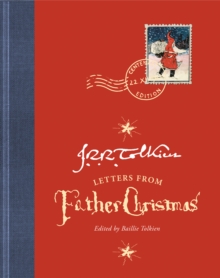
Letters from Father Christmas
Tolkien, J. R. R.
Hardback
Published to celebrate the first ever ‘letter from Father Christmas’ in 1920, this beautiful oversized edition of Tolkien’s famous illustrated letters from ‘Father Christmas’, includes a wealth of charming letters, pictures and decorated envelopes, and promises to be a festive feast for Tolkien fans of all ages. Every December an envelope bearing a stamp from the North Pole would arrive for J.R.R. Tolkien’s children. Inside would be a letter in strange spidery handwriting and a beautiful coloured drawing or some sketches. The letters were from Father Christmas. They told wonderful tales of life at the North Pole: how all the reindeer got loose and scattered presents all over the place; how the accident-prone Polar Bear climbed the North Pole and fell through the roof of Father Christmas’s house into the dining-room; how he broke the Moon into four pieces and made the Man in it fall into the back garden; how there were wars with the troublesome horde of goblins who lived in the caves beneath the house! Sometimes the Polar Bear would scrawl a note, and sometimes Ilbereth the Elf would write in his elegant flowing script, adding yet more life and humour to the stories. No reader, young or old, can fail to be charmed by the inventiveness and ‘authenticity’ of Tolkien’s Letters from Father Christmas. This classic festive book of Tolkien’s enchanting Father Christmas letters, written to his children between the 1920s and the 1940s, has been reworked into a sumptuous, new standard hardback edition. It contains high-quality digital reproductions of his wonderful letters and pictures, including a number of them appearing in this format for the first time, and a revised introduction by Baillie Tolkien.
More Details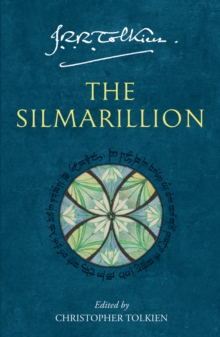
The Silmarillion
Tolkien, J. R. R.
Paperback / softback
The forerunner to The Lord of the Rings, The Silmarillion tells the earlier history of Middle-earth, recounting the events of the First and Second Ages, and introducing some of the key characters, such as Galadriel, Elrond, Elendil and the Dark Lord, Sauron. The Silmarillion is an account of the Elder Days, of the First Age of Tolkien’s world. It is the ancient drama to which the characters in The Lord of the Rings look back, and in whose events some of them such as Elrond and Galadriel took part. The tales of The Silmarillion are set in an age when Morgoth, the first Dark Lord, dwelt in Middle-Earth, and the High Elves made war upon him for the recovery of the Silmarils, the jewels containing the pure light of Valinor. Included in the book are several shorter works. The Ainulindale is a myth of the Creation and in the Valaquenta the nature and powers of each of the gods is described. The Akallabeth recounts the downfall of the great island kingdom of Númenor at the end of the Second Age and Of the Rings of Power tells of the great events at the end of the Third Age, as narrated in The Lord of the Rings. This pivotal work features the revised, corrected text and includes, by way of an introduction, a fascinating letter written by Tolkien in 1951 in which he gives a full explanation of how he conceived the early Ages of Middle-earth.
More Details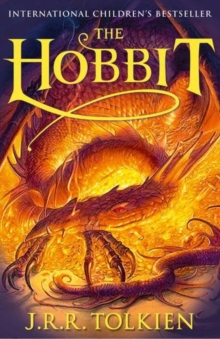
The Hobbit
Tolkien, J. R. R.
Paperback / softback
The Hobbit is the unforgettable story of Bilbo, a peace-loving hobbit, who embarks on a strange and magical adventure. A timeless classic. Bilbo Baggins enjoys a quiet and contented life, with no desire to travel far from the comforts of home; then one day the wizard Gandalf and a band of dwarves arrive unexpectedly and enlist his services – as a burglar – on a dangerous expedition to raid the treasure-hoard of Smaug the dragon. Bilbo’s life is never to be the same again. Seldom has any book been so widely read and loved as J. R.R. Tolkien’s classic tale, ‘The Hobbit’. Since its first publication in 1937 it has remained in print to delight each new generation of readers all over the world, and its hero, Bilbo Baggins, has taken his place among the ranks of the immortals of fiction.
More Details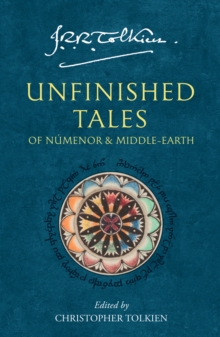
Unfinished Tales
Tolkien, J. R. R.
Paperback / softback
A new B-format edition of JRR Tolkien's legacy of short stories which inhabit the realm of The Lord of the Rings. Unfinished Tales is a collection of narratives ranging in time from the Elder Days of Middle-earth to the end of the War of the Ring, and provides those who have read The Lord of the Rings with a whole collection of background and new stories from the twentieth century's most acclaimed popular author. The book concentrates on the realm of Middle-earth and comprises such elements as Gandalf's lively account of how it was that he came to send the Dwarves to the celebrated party at Bag-End, the emergence of the sea-god Ulmo before the eyes of Tuor on the coast of Beleriand, and an exact description of the military organization of the Riders of Rohan. Unfinished Tales also contains the only story about the long ages of Numenor before its downfall, and all that is known about such matters as the Five Wizards, the Palantiri and the legend of Amroth.The tales were collated and edited by JRR Tolkien's son and literary heir, Christopher Tolkien, who provides a short commentary on each story, helping the reader to fill in the gaps and put each story into the context of the rest of his father's writings.
More Details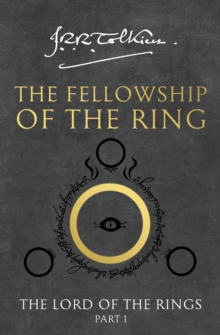
The Fellowship of the Ring
Tolkien, J. R. R.
Paperback / softback
The first part of Tolkien's epic masterpiece, The Lord of the Rings, featuring an exclusive cover designed to complement the new 'History of Middle-earth' series. Sauron, the Dark Lord, has gathered to him all the Rings of Power -- the means by which he intends to rule Middle-earth. All he lacks in his plans for dominion is the One Ring -- the ring that rules them all -- which has fallen into the hands of the hobbit, Bilbo Baggins. In a sleepy village in the Shire, young Frodo Baggins finds himself faced with an immense task, as his elderly cousin Bilbo entrusts the Ring to his care. Frodo must leave his home and make a perilous journey across Middle-earth to the Cracks of Doom, there to destroy the Ring and foil the Dark Lord in his evil purpose. Now available in smart a new livery to match the 'History of Middle-earth' series, and impossible to describe in a few words, JRR Tolkien's great work of imaginative fiction has been labelled both a heroic romance and a classic fantasy fiction. By turns comic and homely, epic and diabolic, the narrative moves through countless changes of scene and character in an imaginary world which is totally convincing in its detail.
More Details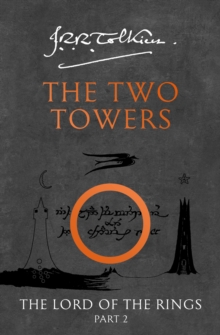
The Two Towers
Tolkien, J. R. R.
Paperback / softback
The second part of Tolkien's epic masterpiece, The Lord of the Rings, featuring an exclusive cover designed to complement the new 'History of Middle-earth' series. This edition, styled to complement the new 'History of Middle-earth' series, tells the story of Frodo and the Companions of the Ring, who have been beset by danger during their quest to prevent the Ruling Ring from falling into the hands of the Dark Lord by destroying it in the Cracks of Doom. They have lost the wizard, Gandalf, in the battle with an evil spirit in the Mines of Moria; and at the Falls of Rauros, Boromir, seduced by the power of the Ring, tried to seize it by force. While Frodo and Sam made their escape the rest of the company were attacked by Orcs. Now they continue their journey alone down the great River Anduin -- alone, that is, save for the mysterious creeping figure that follows wherever they go.
More Details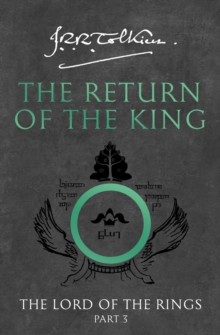
The Return of the King
Tolkien, J. R. R.
Paperback / softback
The final part of Tolkien's epic masterpiece, The Lord of the Rings, featuring an exclusive cover designed to complement the new 'History of Middle-earth' series. The climactic volume of the trilogy, wherein the little hobbit and his trusty companions make a terrible journey to the heart of the land of the Shadow in a final reckoning with the power of Sauron. Impossible to describe in a few words, JRR Tolkien's great work of imaginative fiction has been labelled both a heroic romance and a classic fantasy fiction. By turns comic and homely, epic and diabolic, the narrative moves through countless changes of scene and character in an imaginary world which is totally convincing in its detail. Tolkien created a vast new mythology in an invented world which has proved timeless in its appeal.
More Details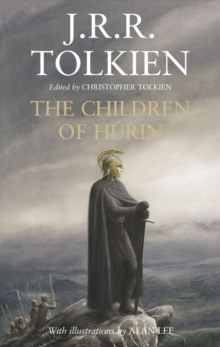
The Children of Hurin
Tolkien, J. R. R.
Hardback
Painstakingly restored from Tolkien's manuscripts and presented for the first time as a fully continuous and standalone story, the epic tale of The Children of Hurin will reunite fans of The Hobbit and The Lord of the Rings with Elves and Men, dragons and Dwarves, eagles and Orcs, and the rich landscape and characters unique to Tolkien. There are tales of Middle-earth from times long before The Lord of the Rings, and the story told in this book is set in the great country that lay beyond the Grey Havens in the West: lands where Treebeard once walked, but which were drowned in the great cataclysm that ended the First Age of the World. In that remote time Morgoth, the first Dark Lord, dwelt in the vast fortress of Angband, the Hells of Iron, in the North; and the tragedy of Turin and his sister Nienor unfolded within the shadow of the fear of Angband and the war waged by Morgoth against the lands and secret cities of the Elves. Their brief and passionate lives were dominated by the elemental hatred that Morgoth bore them as the children of Hurin, the man who had dared to defy and to scorn him to his face. Against them he sent his most formidable servant, Glaurung, a powerful spirit in the form of a huge wingless dragon of fire. Into this story of brutal conquest and flight, of forest hiding-places and pursuit, of resistance with lessening hope, the Dark Lord and the Dragon enter in direly articulate form. Sardonic and mocking, Glaurung manipulated the fates of Turin and Nienor by lies of diabolic cunning and guile, and the curse of Morgoth was fulfilled. The earliest versions of this story by J.R.R. Tolkien go back to the end of the First World War and the years that followed; but long afterwards, when The Lord of the Rings was finished, he wrote it anew and greatly enlarged it in complexities of motive and character: it became the dominant story in his later work on Middle-earth. But he could not bring it to a final and finished form. In this book Christopher Tolkien has constructed, after long study of the manuscripts, a coherent narrative without any editorial invention.
More Details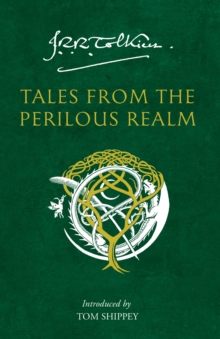
Tales from the Perilous Realm
Tolkien, J. R. R.
Paperback / softback
This is the definitive collection of Tolkien’s five acclaimed modern classic ‘fairie’ tales in the vein of The Hobbit, fully corrected and reset for this edition and all beautifully illustrated in pencil by the award-winning artist, Alan Lee. The five tales are written with the same skill, quality and charm that made The Hobbit a classic. Largely overlooked because of their short lengths, they are finally together in a volume which reaffirms Tolkien's place as a master storyteller for readers young and old. Roverandom is a toy dog who, enchanted by a sand sorcerer, gets to explore the world and encounter strange and fabulous creatures. Farmer Giles of Ham is fat and unheroic, but – having unwittingly managed to scare off a short-sighted giant – is called upon to do battle when a dragon comes to town;The Adventures of Tom Bombadil tells in verse of Tom's many adventures with hobbits, princesses, dwarves and trolls;Leaf by Niggle recounts the strange adventures of the painter Niggle who sets out to paint the perfect tree;Smith of Wootton Major journeys to the Land of Faery thanks to the magical ingredients of the Great Cake of the Feast of Good Children. This new collection is fully illustrated throughout by Oscar-winning artist, Alan Lee, who provides a wealth of pencil drawings to bring the stories to life as he did so memorably for The Hobbit and The Children of Húrin. Alan also provides an Afterword, in which he opens the door into illustrating Tolkien's world. Taken together, this rich collection of tales from the author of The Children of Húrin will provide the reader with a fascinating journey into lands as wild and strange as Middle-earth.
More Details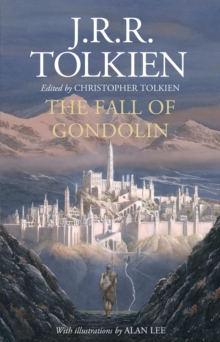
The Fall of Gondolin
Tolkien, J. R. R.
Hardback
In the Tale of The Fall of Gondolin are two of the greatest powers in the world. There is Morgoth of the uttermost evil, unseen in this story but ruling over a vast military power from his fortress of Angband. Deeply opposed to Morgoth is Ulmo, second in might only to Manwë, chief of the Valar. Central to this enmity of the gods is the city of Gondolin, beautiful but undiscoverable. It was built and peopled by Noldorin Elves who, when they dwelt in Valinor, the land of the gods, rebelled against their rule and fled to Middle-earth. Turgon King of Gondolin is hated and feared above all his enemies by Morgoth, who seeks in vain to discover the marvellously hidden city, while the gods in Valinor in heated debate largely refuse to intervene in support of Ulmo's desires and designs. Into this world comes Tuor, cousin of Túrin, the instrument of Ulmo's designs. Guided unseen by him Tuor sets out from the land of his birth on the fearful journey to Gondolin, and in one of the most arresting moments in the history of Middle-earth the sea-god himself appears to him, rising out of the ocean in the midst of a storm. In Gondolin he becomes great; he is wedded to Idril, Turgon's daughter, and their son is Eärendel, whose birth and profound importance in days to come is foreseen by Ulmo. At last comes the terrible ending. Morgoth learns through an act of supreme treachery all that he needs to mount a devastating attack on the city, with Balrogs and dragons and numberless Orcs. After a minutely observed account of the fall of Gondolin, the tale ends with the escape of Tuor and Idril, with the child Eärendel, looking back from a cleft in the mountains as they flee southward, at the blazing wreckage of their city. They were journeying into a new story, the Tale of Eärendel, which Tolkien never wrote, but which is sketched out in this book from other sources. Following his presentation of Beren and Lúthien Christopher Tolkien has used the same 'history in sequence' mode in the writing of this edition of The Fall of Gondolin. In the words of J.R.R. Tolkien, it was ‘the first real story of this imaginary world’ and, together with Beren and Lúthien and The Children of Húrin, he regarded it as one of the three 'Great Tales' of the Elder Days.
More Details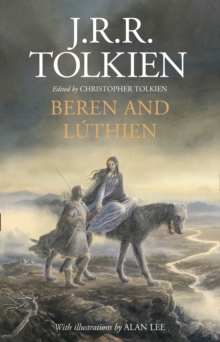
Beren and Luthien
Tolkien, J. R. R.
Hardback
Painstakingly restored from Tolkien’s manuscripts and presented for the first time as a continuous and standalone story, the epic tale of Beren and Lúthien will reunite fans of The Hobbit and The Lord of the Rings with Elves and Men, Dwarves and Orcs and the rich landscape and creatures unique to Tolkien’s Middle-earth. The tale of Beren and Lúthien was, or became, an essential element in the evolution of The Silmarillion, the myths and legends of the First Age of the World conceived by J.R.R. Tolkien. Returning from France and the battle of the Somme at the end of 1916, he wrote the tale in the following year. Essential to the story, and never changed, is the fate that shadowed the love of Beren and Lúthien: for Beren was a mortal man, but Lúthien was an immortal Elf. Her father, a great Elvish lord, in deep opposition to Beren, imposed on him an impossible task that he must perform before he might wed Lúthien. This is the kernel of the legend; and it leads to the supremely heroic attempt of Beren and Lúthien together to rob the greatest of all evil beings, Melkor, called Morgoth, the Black Enemy, of a Silmaril. In this book Christopher Tolkien has attempted to extract the story of Beren and Lúthien from the comprehensive work in which it was embedded; but that story was itself changing as it developed new associations within the larger history. To show something of the process whereby this legend of Middle-earth evolved over the years, he has told the story in his father's own words by giving, first, its original form, and then passages in prose and verse from later texts that illustrate the narrative as it changed. Presented together for the first time, they reveal aspects of the story, both in event and in narrative immediacy, that were afterwards lost.
More DetailsI have only handpicked a few of the more popular titles by the great legend himself, but if you want to learn more, I will be happy to receive an email or get in touch on our social media platforms, about your own experience regarding Tolkien’s work. I will now bid you farewell with my personal favourite quote, so much so that I have the elvish translation from the inscription on the ring as a tattoo about my person!
“One Ring to rule them all, One Ring to find them, One Ring to bring them all, and in the darkness bind them.”
Jess, Content Selection Team
